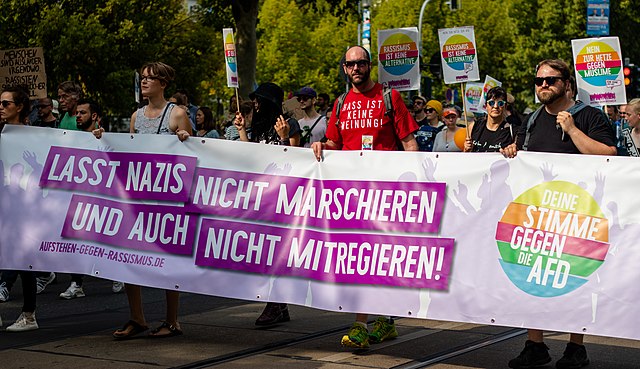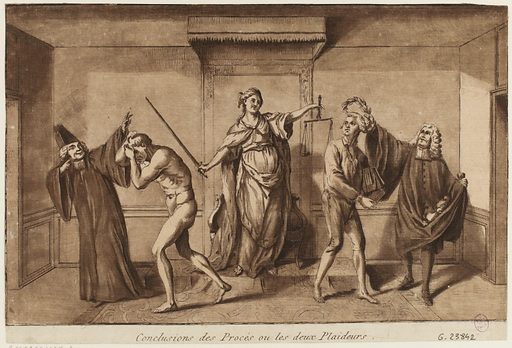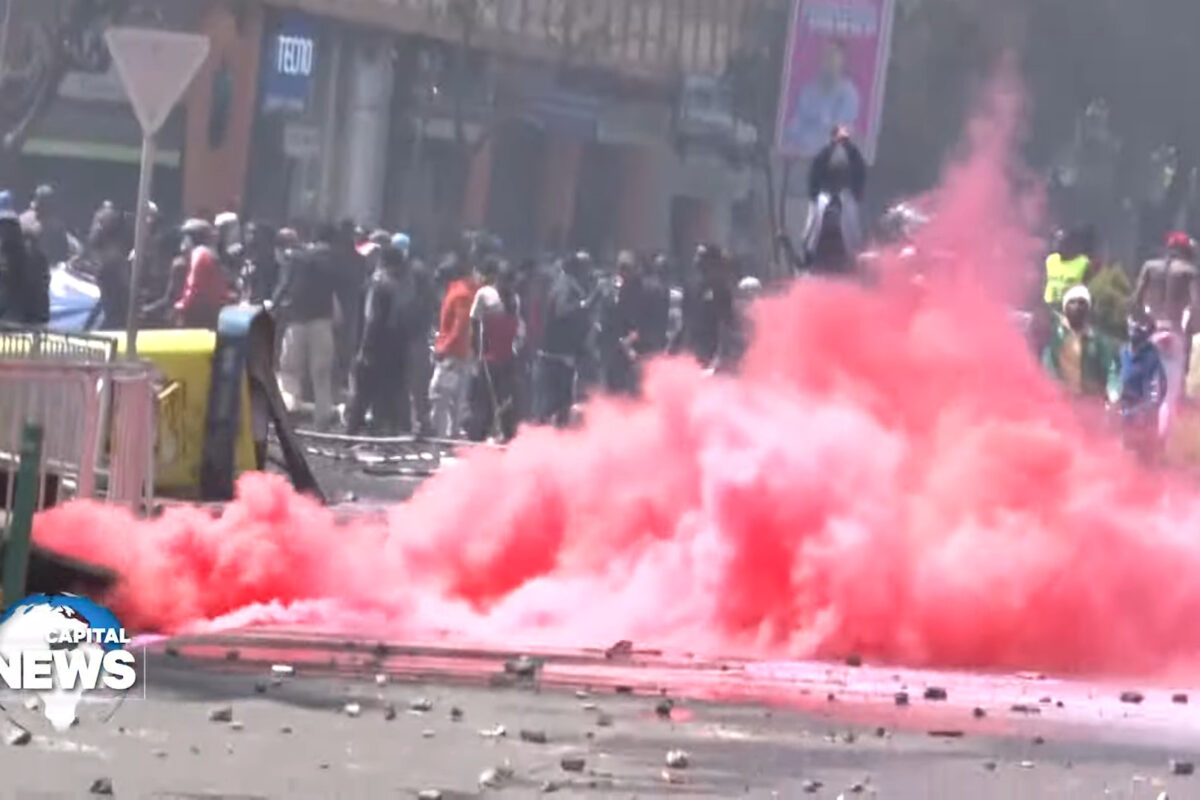The AfD intends to hold their party conference in Essen at the end of June. The anti-racist movement, which has gained traction in many areas, must also come together there.
The time in which the AfD has been able to spread their inhumane propaganda unhindered in the open appears to be over. In every corner of Germany, resistance to the Right stirs. People are standing up en masse against racism and even more want to engage beyond assembly and protest. An important occasion thereto will be the AfD national party conference at the end of June in Essen.
The AfD–founded in 2013 as a Euroskeptical, national-conservative party, was no later than 2015 a far-right, partly-fascist party–has since primarily worked on building a party founded in racism (especially Islamophobia). This has been fairly successful. After its establishment, the party fell just below the threshold for inclusion in the Bundestag at 4.7%. In the following European elections, that number was already above 7% and during state elections the party gained admission to all federal state parliaments.
Since the 2017 federal elections, the party has also been represented in the Bundestag. After many directional disputes, several more ‘moderate’, national-conservatives have left the party, leaving a party made up of fascists such as Björn Höcke, wrought with racism and fascist at its core.
An Anti-AfD Wake-up Call
Despite increasing mass anti-racist, pro-refugee protests in recent years, the AfD was not one of the movement’s central interests. By and large, the party could grow undisturbed.
That changed in January of this year after the agency Correctiv exposed—along with other racists and fascists—a group of high-ranking AfD officials’ plans. The meeting in question concerned, among other things, the party’s recent demands for deportation (‘remigration’) of all migrants living in Germany, further including any ‘non-assimilated’ German citizens. When met with public pressure the party attempted to downplay and distance themselves from the affair.
Member statements, however, get to the point. ‘We will send foreigners back home. By the millions. That is no secret. That is a promise,’ Bundestag member René Springer made clear after the findings became public. When asked, Björn Höcke claimed, ‘We will be able to live with 20 to 30% fewer people in Germany without issue, in fact, I find this ecological and even rational.’
The published findings had the working of a wake-up call on the population. Since then, hundreds of thousands of people in Germany have taken and continue to take to the streets to stand against the demands of the AfD. All over, participation exceeded estimated numbers. Rallies were ended prematurely over security concerns, entire city centres were brought to a standstill. Many individuals who had never been to such a demonstration took part.
Bringing Countermovement to the Streets
Many at these demonstrations hope that the problem can be solved by banning the AfD from government. There are arguments for doing so, but there are just as many against. Among other things, such a process takes years. Years, over which Nazis could reorganise. A past with the neofascist NPD shows that the ban process can fail to overcome many judicial hurdles, or simply because the state is made up in part of these groups’ informants.
The danger of a ban process is that protests could lose traction in favour of relying on state action. The protests are made of precisely what we need: a broad, antifascist movement on the streets.
Hitler himself said, ‘One thing alone could have stopped our movement—if our adversaries had understood their own principles and had from day one struck with all ruthlessness the core of our new movement.’
How the NPD Was Stopped
History shows being branded as Nazis means trouble for fascists. Confronted publicly with their own identity, they lose their temper and expose themselves.
The best example is the NPD, founded in the 1960s. At that time, many former DRP (Deutsche Reichspartei) Nazis assembled in the NPD, but remained hopelessly isolated. The NPD was to give them a respectable, national-conservative camouflage, that the German public fell for. Kiesinger, Chancellor at the time and former NSDAP member, certified the NPD as not fascist. Liberal paper Die Zeit warned against ‘denigrating the NPD as neonazis’. After its founding in 1964, the party recorded strong successes. Membership doubled. Following early success in 1966, the party acquired seats in seven federal state parliaments within 18 months. But come 1969, the NPD found itself in crisis. Contrary to expectations, they fell short of inclusion in the Bundestag and over the following years, membership shrunk to 6,000. What happened?
Adolf von Thadden, NPD party chairman at the time, later admitted that the 1968 loss of support could be traced back to, ‘cries for a ban, oppression of party assembly and increasing terrorisation’ from the Left. Wherever he went, he was greeted with the chant, ‘one Adolf was enough’; eggs, tomatoes, etc. were thrown at him. Nearly all public NPD events were disrupted in this manner. Conflicts at NPD rallies intensified. The party deployed its security service more frequently, which conducted itself like a paramilitary unit, in white helmets and armed with nightsticks. Attacks by these SS-like troops were included in the agenda. In Kassel a Nazi marshal fired shots at counter protesters. Images of the NPD security circulated the national and international press. The NPD was exposed. The national-conservative facade chipped away revealing the ugly grimace of fascism.
Direct Confrontation with Nazis
At every public appearance, Nazis must be shown that many not only reject their content but are also prepared to stand directly in their path to be demoralised. If Nazis cannot march, young members impressed by the feelings of power that come with rallying in particular grow discouraged. Even Goebbels recognised the threat of decisive confrontation by antifascists when he said, ‘If you allow even one single meeting to be broken up, people will stay away from you.’
Experiences in the 1970s, as the NPD again gained traction, showed anew that they could be weakened by a determined countermovement in the streets. Their 1977 ‘Deutschland-Treffen’ in Frankfurt gave the NPD cause for celebration as 5,000 members and only 1,000 counter protesters were in attendance. Those who wanted to stand in their way, however, grew quickly in number despite police bans. By 1978, the NPD was forced to divert to Frankfurt suburbs because thousands were prepared to hinder their rallies in the city centre. In 1970, 50,000 gathered in a counterprotest banned by police.
In 1997 up to 20,000 Munich residents occupied the city centre and prevented the largest Nazi march since the 1970s. The rally was interrupted and police escorted the Nazis back to their buses. As a result, numerous members withdrew from the NPD. Europe’s largest annual Nazi march in Dresden could also be stopped by mass antifascist blockades. A broad antifascist union called upon the nation to stand in Nazis’ way using this tactic. In 2010, 12,000 determined antifascists succeeded in blocking 6,000 Nazis. In 2011 it was 20,000 against 2,500. In 2013, only around 800 Nazis showed up.
Mass Mobilisation Against the AfD
These wins can be linked to broad alliances that confront fascists and racists head-on.
In the fight against fascism, it is necessary to form the largest possible union of workers and those who wish proactively stand in the path of fascists. This is true of the fight against the AfD. In light of the upcoming European elections we must disrupt each and every AfD info-booth, campaign event and rally with creative action and with as many people as possible. To do so, we need broad alliances that make it clear that racism and fascism have no place in our society.
In a capitalist economy, in which a minority exploits a large majority, the minority relies on racism to divert majority unrest toward scapegoats. New fascist organisations will always arise from environments of frustration with prevailing conditions and omnipresent racism. Antifascists can always fight back, but a prerequisite to a world without Nazis is a world without oppression and exploitation. As such, it is necessary to prioritise the establishment of socialist organisations today.
Save the Date: AfD Party Conference in Essen
The coalition, Essen Stellt Sich Quer, has already declared that they will not let the AfD national party conference on June 29th and 30th go by unchallenged. The nationally operating group, Aufstehen Gegen Rassismus, will also partake in disrupting the event. Further information in brief can be found here: Aufstehen gegen Rassismus
This article first appeared in German on the Sozialismus von Unten website. Translation: Shav McKay. Reproduced with permission




